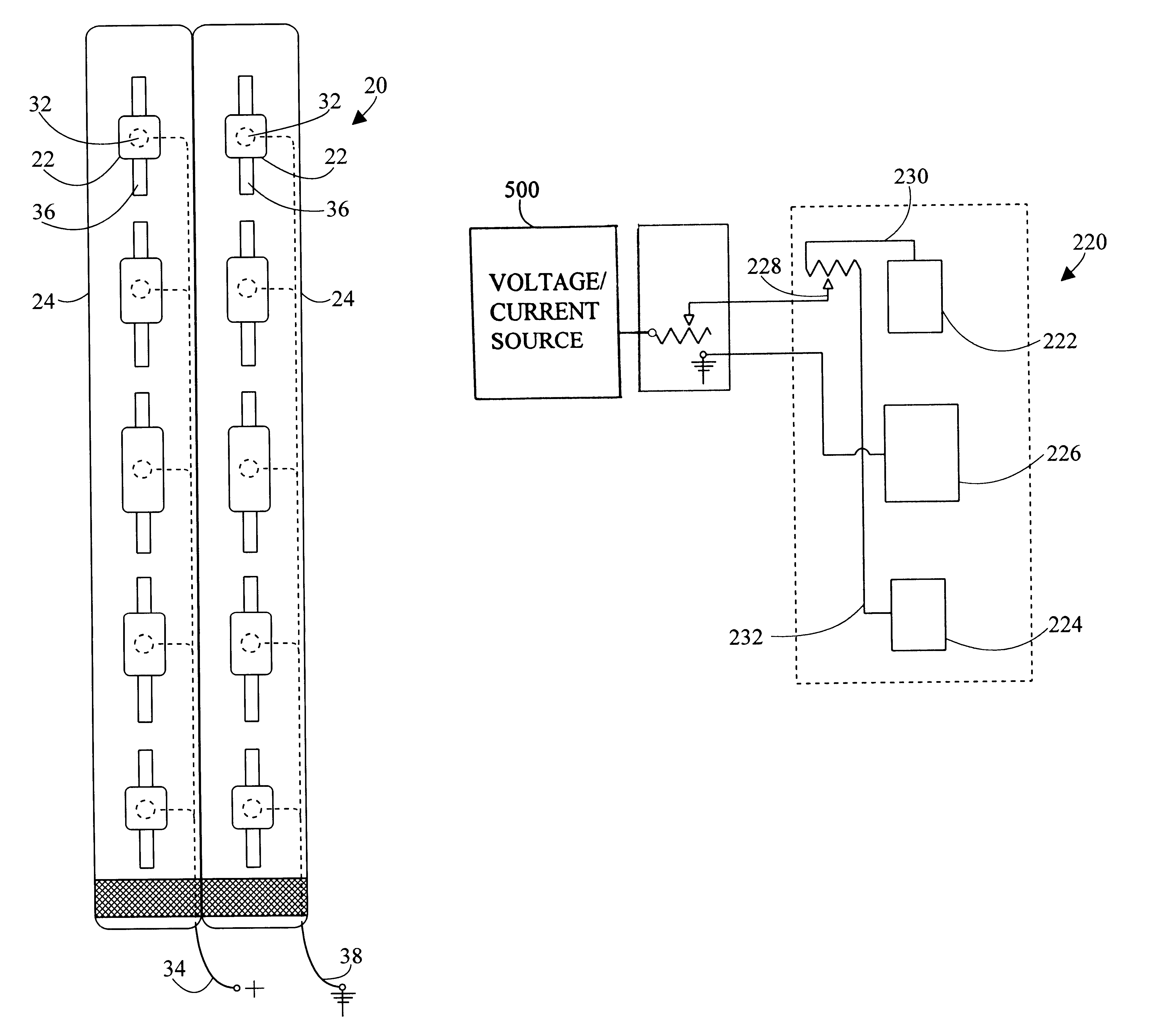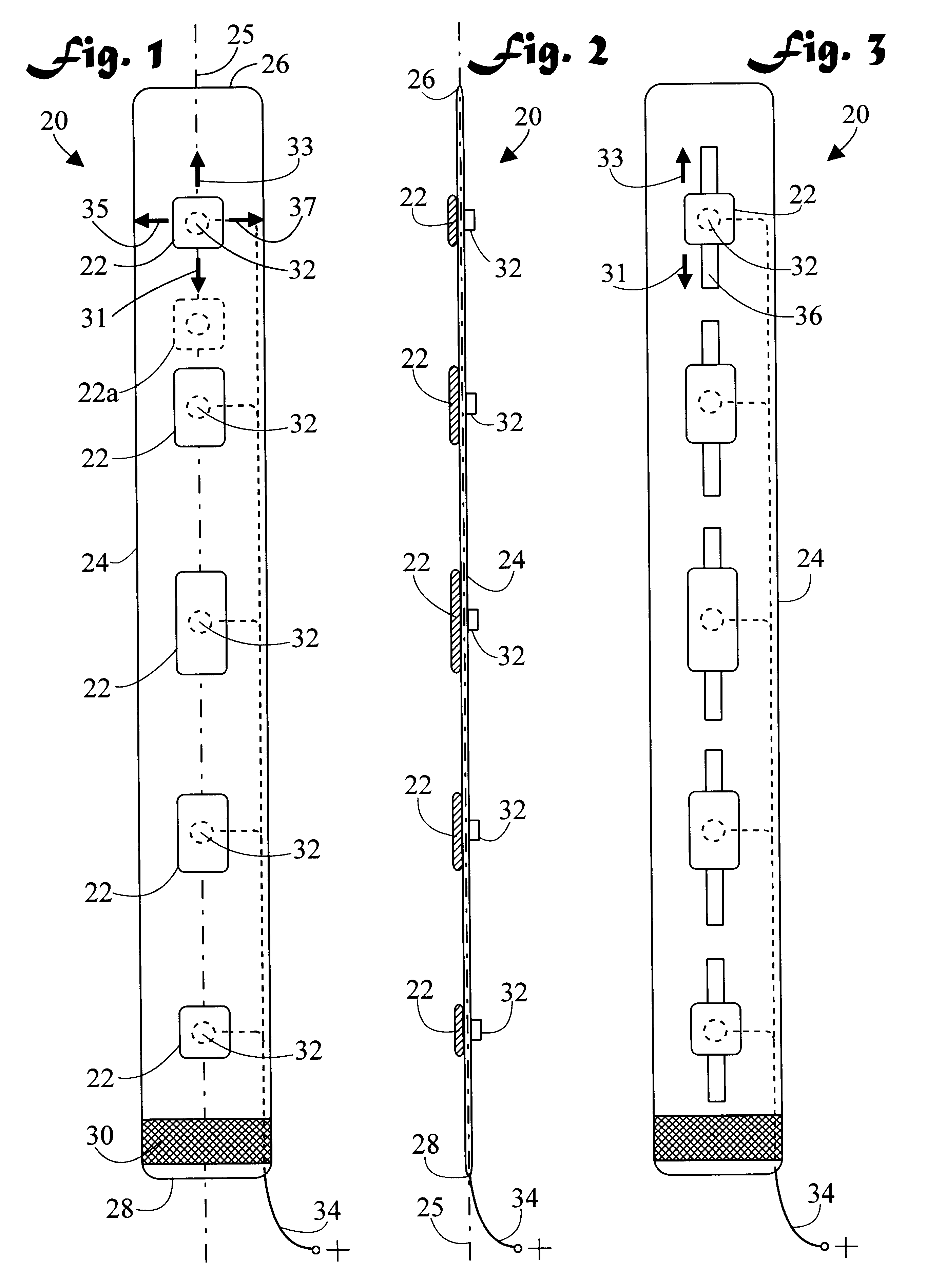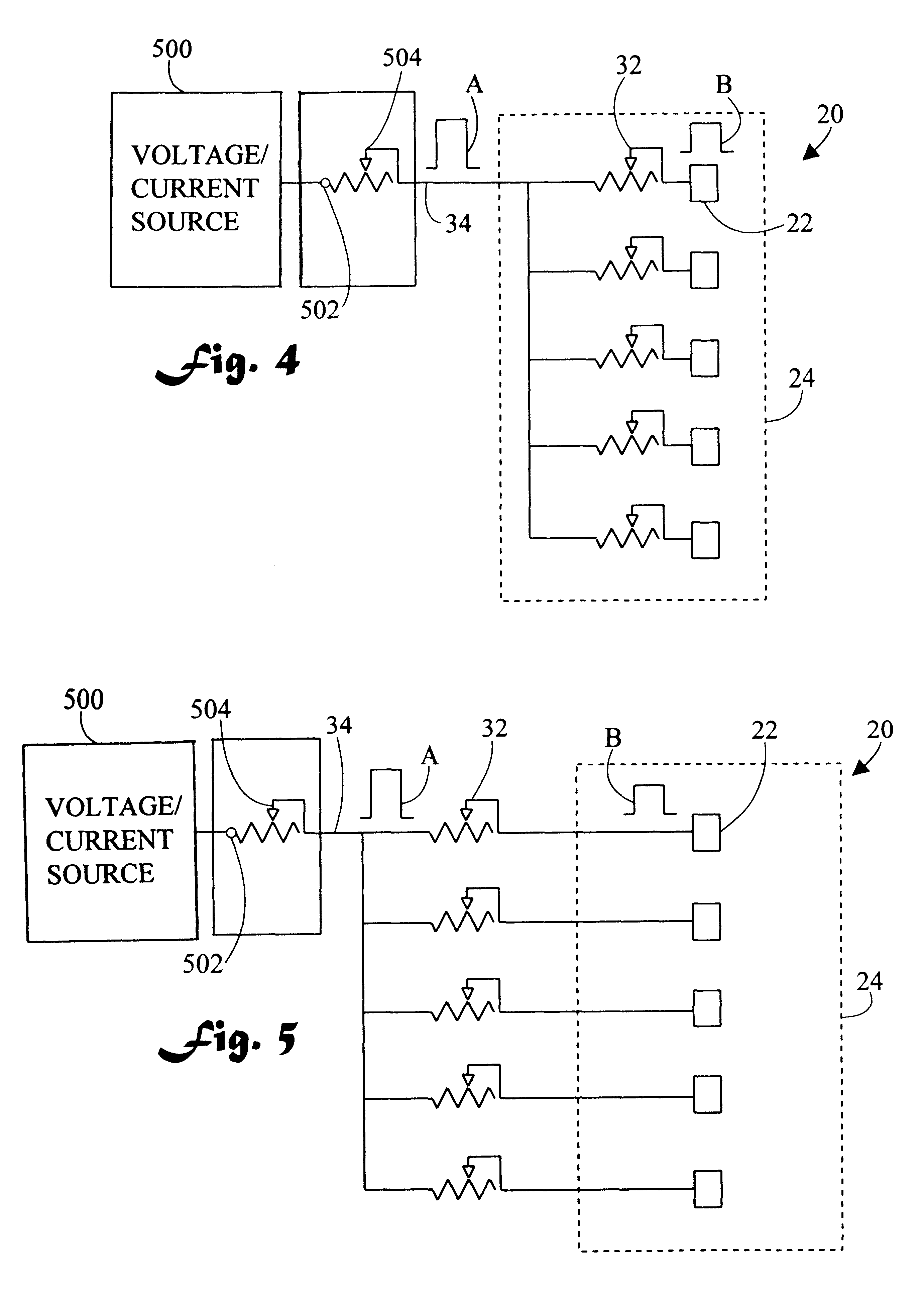Device for administrating electro-muscle stimulation and method of use
a technology of electromuscle stimulation and electrodes, which is applied in the direction of therapy, physical therapy, artificial respiration, etc., can solve the problems of paralysis of the legs walking the exercycle, and achieve the effects of enhancing natural exercise, prolonging the exercise period, and promoting maximum muscle contraction
- Summary
- Abstract
- Description
- Claims
- Application Information
AI Technical Summary
Benefits of technology
Problems solved by technology
Method used
Image
Examples
second embodiment
FIG. 6 is a top plan view of two extremity cuff devices 20 of the second embodiment shown in FIG. 3 traversely joined together. One device 20 receives a positive stimulation signal 34, and the other receives a negative (return or common) stimulation signal 38. The cooperating positive and negative signals are required in order to promote a current flow between electrodes 22 of the two devices 20.
FIG. 7 is a front elevation view of a patient 506 showing the muscles of the rectus abdominus divided at the umbilical area 512 into an upper portion 508 and a lower portion 510. The rectus abdominus includes two distinct muscles on opposite sides of the linea alba. But for purposes of this invention, they work together and are stimulated together. Line 514 defines the junction of the right and left obliques 516 with the upper portion 508 and lower portion 510 of the rectus abdominus (refer also to FIG. 8).
FIG. 8 is a side elevation view of the patient 506 showing the right obliques 516. The...
embodiment 120
FIG. 12 is a side elevation view of the abdominal embodiment 120 installed on an exercising patient 506. Device 120 stimulates the muscles as was described under the discussion of FIG. 9.
FIG. 13 is a top plan view of a third extremity cuff embodiment, generally designated as 220, having both poles on one belt. FIG. 14 is a schematic diagram of the third extremity cuff embodiment 220. Third extremity cuff 220 includes a first positive electrode 222 and a second positive electrode 224. A return electrode 226 is disposed between first positive electrode 222 and second positive electrode 224. An adjustment control 228 simultaneously applies a first positive voltage 230 to first positive electrode 222 and a second positive voltage 232 to second positive electrode 224. As first positive voltage 230 increases, second positive voltage 232 decreases. And as first positive voltage 230 decreases, second positive voltage 232 increases. That is, adjustment control 228 functions much as the balan...
embodiment 420
FIG. 17 is a bottom plan view of fifth extremity cuff Holes 453 are cut in flexible covering 423 directly over sponges 429 so that sponges 429 may come into contact with the user's skin. The snaps 449 hold the edges of the sponges 429 to keep them from passing through the holes 453.
FIG. 18 is a top plan view of fifth extremity cuff embodiment 420 in the folded and ready for use configuration. From FIG. 16, the left side has been folded under the right side in direction 458 generally along axis 460. Stretchable zigzag stitching 465 is used to form flexible covering 423 into an elongated pocket into which sponge assembly 425 can slidably fit. Flap 438 has been folded over in direction 470 to close the open end of the pocket.
FIG. 19 is a cross sectional view along the line 19--19 of FIG. 18 showing the folded and sewn flexible covering 423.
FIG. 20 is a schematic diagram of fifth extremity embodiment 420. Master adjustment control 404 and balance adjustment control 428 are both mounted...
PUM
 Login to View More
Login to View More Abstract
Description
Claims
Application Information
 Login to View More
Login to View More - R&D
- Intellectual Property
- Life Sciences
- Materials
- Tech Scout
- Unparalleled Data Quality
- Higher Quality Content
- 60% Fewer Hallucinations
Browse by: Latest US Patents, China's latest patents, Technical Efficacy Thesaurus, Application Domain, Technology Topic, Popular Technical Reports.
© 2025 PatSnap. All rights reserved.Legal|Privacy policy|Modern Slavery Act Transparency Statement|Sitemap|About US| Contact US: help@patsnap.com



